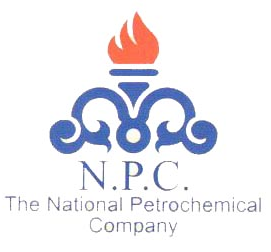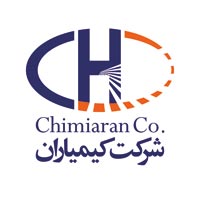
Iran’s top rank in terms of hydrocarbon reserves has placed the country at the center of attention in the world. The widespread growth and development of energy-related technologies, ranging from …
Undoubtedly, the most important competitive advantage for investment and the development of petrochemical industries in Iran would be access to feedstock like natural gas, ethane, naphtha and condensate in big volumes and at competitive prices.
The capacity of gas treatment and transmission industries in Iran currently stands at around 750 mcm/d, which will soon reach 1,000 mcm/d. Furthermore, access to ethane as petrochemical feedstock is instrumental in boosting Iran’s competitive status for the production of petrochemicals.
In addition to easy access to feedstock, Iran enjoys other advantages in the petrochemical industry. The big and growing market in the country for petrochemicals, easy access to skilled and specialized workforce, extended communications infrastructure, sharing borders with 15 countries including Central Asia and South Caucasus, establishment of special economic petrochemical zones with political stability guarantees and pro-investment laws, offering incentives like tax exemptions to investors and the existence of a chain of active units of petrochemical industries. All these advantages can play a prominent role in the development of upstream and downstream industries.
Iran is currently one of the most secure countries in the Middle East for domestic and foreign investment in the petrochemical sector. This security pertains to the infrastructure, return of investment, higher rate of return, growing demand in the region and knowledge-based structure.
Low net costs, security and rapidity of transfer are the most important concerns of investors for the transit of commodities. These parameters exist in Iran from north to south and from east to west of the country.
An advantage which foreign delegates always highlight in their remarks for investment in Iran, is the existence of skilled manpower in different engineering, construction and contracting sectors. That gives Iran a big advantage over its rivals. Every three to four years, around 4,000 students graduate from universities and they are ready to work.
Today, in case long-term feedstock prices are set, investors would be able to make a more realistic assessment of projects they would be willing to finance in Iran. Setting gas price for petrochemical units for the long term would let investors, producers and industrialists of petrochemical sector to have a clear price range for coming years and therefore they would not be worried about price fluctuations in the market.
With the finalization of financing for 7 methanol projects in Assaluyeh, some 10 million tons of methanol would hit global markets. Before this, the country’s petrochemical development has been mainly in the ethylene sector because due to the abundance of ethane, most products became ethylene-based and downstream industries had the chance to grow. But in order to accelerate the growth of these industries, propylene production must be facilitated. Propylene generates and feeds an extended chain of downstream industries. Therefore, Iran eyes propylene-to-methanol projects so that it would not slash the methanol price while propylene production would help improve downstream industries in the country.
Completion of 60 incomplete projects with 10-90% progress could raise the current production capacity of petrochemicals to 120 million tons a year. Furthermore, by implementing 36 new projects which need $41 billion in investment, the annual production capacity will go beyond 180 million tons.
Senior NPC officials have stressed the point that banks in Iran would not be able to provide so much investment for the petrochemical industry. They have welcomed the entry of banks and financial institutes into this value-generating industry. In the wake of the lifting of international sanctions on Iran, the country has held talks with foreign companies and voiced its readiness to cooperate with leading countries. Several European countries with a record of working in Iran have expressed readiness to return to Iran’s petrochemical sector.
No new investment has been made in Iran’s petrochemical sector over the past one decade. Therefore, this industry is now thirsty for foreign investment and technology. Foreign parties are well aware of potentialities and big profits of this industry for them. Germany’s BASF ad Linde, France’s Axens, South Korea’s Hyundai, Britain’s Shell and South Africa’s Sasol are set to benefit from post-sanctions period in Iran to resume work in Iran’s petrochemical projects in the near future. They know quite well that the rate of return for depositing money in banks is around 1% in their countries, while their investment in Iran’s petrochemical projects would produce at least a 20% rate of return.
Wood Mackenzie, a global leader in commercial intelligence for energy, predicts Iran can attract $70 billion for petrochemical projects under some conditions.
“We believe Iran can attract $70billion worth of investments, but only over a prolonged period that confirms it is an attractive investment opportunity. By comparison, the US shale gas revolution attracted over 200 projects worth over $130 billion within a decade of its emergence,” Hussain said.
Asked about the prospects of Iran’s petrochemical exports, the Wood Mackenzie expert said Iran is taking steps to boost exports but their first priority is to increase production.
Iran exported about $15 billion worth of petrochemicals in 2011, before western sanctions were imposed. It has revived the export volume since 2014 due to elimination of petrochemical-related sanctions in November 2013. According to a report by Iran Customs Administration last week, Iran exported $10 billion worth of petrochemicals during the first eight months of the current year, unchanged in value, but increased almost 40% in volume.
After petrochemical feedstock prices increased in 2014 many operating petrochemical plants in Iran expressed their interest in developing value chain around their complexes and they started negotiations with foreign developing companies.
Foreign investors seeking cooperation with Iran are active in a variety of sectors. For instance, the Japanese are willing to invest in centralized utility, olefin and ammoniac projects, the Indians seek investment in urea units, South Koreans favor investment in fuel and aromatic units, while Europeans prefer GTTP and basic units.
At present, the competitive advantage of petrochemical products particularly in the downstream sector in return for the sale of oil and gas has pushed this group of industries into the focal point. Given the significant role of these industries in social and economic development and given the country’s potentialities, the petrochemical industry must be taken into consideration more than ever as it serves domestic and foreign industries.
With the development of upstream and mid-stream petrochemical industries in recent years, important steps have been taken for the completion of the value chain of this industry; however, selling raw materials continues to be the main advantage of this industry. Official estimates indicate that 70% of the value-added of petrochemical industry materializes in downstream industries, while it has not been developed along with upstream industries.
Source : Shana













